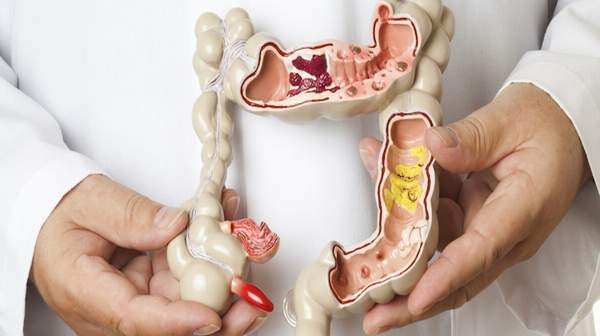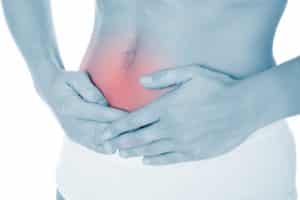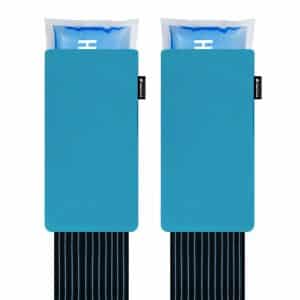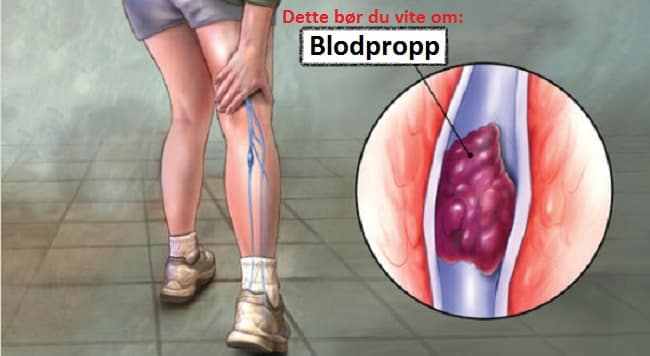
Pain in the rectum (rectal pain) | Cause, diagnosis, symptoms and treatment
Pain in the rectum? Here you can learn more about pain in the rectum, as well as associated symptoms, cause and various diagnoses of rectal pain. Rectal pain should be taken seriously. Follow and like us too Our Facebook page for free, daily health updates.
Pain in the rectum refers to pain or discomfort in the anus, rectum or lower part of the intestinal tract. It is relatively common to experience transient pain in the rectum, but it is important to note that it is rarely severe. Some of the most common causes include muscle spasms and constipation.
However, it is important to note that certain symptoms may indicate more serious diagnoses - these include:
- Blood in the stool
- Accidental weight loss
In this article, you will learn more about what may be causing your rectal pain, as well as various symptoms and diagnoses.
Are you wondering something or do you want more of such professional refills? Follow us on our Facebook page «Vondt.net - We relieve your pain»Or Our Youtube channel (opens in new link) for daily good advice and useful health information.
Cause and diagnosis: Why did I hurt my rectum?

1. Minor injury or trauma
Many cases of minor trauma to the rectum and end terms are due to sex or masturbation. It may also be due to a fall on the buttocks.
Other symptoms of minor damage to the rectum may include:
- Bleeding in the rectum
- Constipation
- Swelling
2. Sexually transmitted infections (STDs)
Sexually transmitted diseases can spread from the genitals and on to the rectum - it can also be transmitted through anal sex. It may cause minor bleeding, discolored discharge, soreness and itching.
Some of the most common STDs that can cause anal pain are:
- gonorrhea
- Herpes
- HPV virus
- Klamydia
- Syphilis
This also emphasizes the importance of using protection when having sex.
3. Hemorrhoids
Up to 75% of us will suffer from hemorrhoids during their lifetime - so as you can see this is a very common cause of pain in the rectum and anus.
Symptoms of such hemorrhoids vary based on the size and position of the hemorrhoid or hemorrhoids. It is possible to get hemorrhoids that sit deep inside the rectum and which are thus not visible if you do not go more thoroughly to work. If the hemorrhoid becomes large enough, it can also bulge outwards - through the anal opening itself.
Such hemorrhoids can cause rectal pain in combination with:
- A cyst-like lump in or out of the rectum
- Swelling around the rectum
- Intestinal problems and indigestion
- Itching
Also read: - 6 Early Signs of Appendicitis
4. Anal Fissures (Rupture of the rectum)

Anal fissures are small tears in the rectal opening itself. They are very common, especially among children - and, not least, women who have recently gone through a birth.
Tears in the rectal opening normally occur when hard and large stools stretch out the intestinal opening and crack the skin. Due to the fact that you go to the bathroom about 1-2 times during the day - which leads to irritation and inflammatory reactions - it can lead to it taking longer before the rectal growths heal.
Such analgesics may also provide the basis for:
- Blood on the toilet paper
- A lump of skin or ulcer formed by the rift
- Itching around the rectum
- Extremely sharp pain when trying to walk to the bathroom
5. Muscle spasms of the anus
Rectal pain may be due to muscle spasms in the muscles of the rectum. It is also very similar to a similar muscle syndrome called levator ani syndrome.
It is twice as common for women to experience painful muscle spasms in the rectum - and it especially affects those aged 30-60 years. As many as close to 20% suffer from such muscle pain in the anus during their lifetime.
In addition to pain in the anus, it can also occur:
- Acute, powerful muscle spasms
- Spasms that last anywhere from a few seconds to several minutes
6. Anal glands (anal fistula)
You may not know this, but the rectum is covered by tiny glands that release an oil-like substance that lubricates the skin inside the rectum and keeps it healthy and healthy. These boils can also become inflamed and filled with infection.
Such anal bumps can also lead to:
- Bloody stools
- Fever
- indigestion
- Constipation
- Swelling around the anus and rectum
Also read: - 6 Early Signs of Stomach Cancer
7. Perianal Hematoma (Blood Collection)
Perianal hematomas are also known as external hemorrhoids due to a blood accumulation in the tissue around the rectum. When this tissue accumulates here it can lead to a distinct cooling and swelling of the anus.
Such perianal hematomas can also provide the basis for:
- Blood on the toilet paper
- A cool inside the rectum
- Intestinal Problems
- Difficulty sitting and walking
8. Anal cramps (analgesic mice)
Reduced pain due to anal spasms is called tenesmus. You often have a clear connection with irritable bowel disease, Crohn's disease and ulcerative colitis
Anal cramps can also cause the following symptoms:
- A feeling of having to go to the bathroom all the time
- Cramps in and around the rectum
- Having to pull in very hard to get the stools out
9. Irritable bowel disease
Irritable bowel disease is a group of various intestinal diseases that include inflammation, pain and bleeding in the intestine - which includes the rectum. The two most common intestinal diseases are Crohn's disease and ulcerative colitis.
Such irritable bowel disease can also cause:
- Blood in the stool
- Diarrhea
- Fever
- Constipation
- Abdominal pain and abdominal cramps
- Lack of appetite
- Accidental weight loss
Also read: - 9 Early Signs of Celiac Disease
10. Rectal prolapse
If the body loses the connectors that hold the rectum in place in the intestines, then the rectum can actually protrude from the anal opening. Yes, you heard just right. This is known as a rectal prolapse.
Fortunately, this is very rare, but it is a fact that it affects women six times more often than men. Those most affected by this are in their 60s.
Such rectal prolapse can also cause:
- Blood in the stool
- A tissue lump protruding from the anal opening
- Constipation
- Leakage of minor parts of the stool or stools
11. Hard stool stuck in the rectum prolapse
If you feel that you really have to go to the bathroom, but that nothing comes when you press, then this may be because it is stool that is physically stuck inside the rectum. This can occur at any age - but is most common among those a little older.
This can also cause:
- Swelling of the stomach and rectum
- Nausea
- Abdominal pain
- Vomit
12. Can it be cancer of the rectum that causes me these pains?
Doubtful. Bowel and rectal cancer is almost always painless. In fact, sometimes they do not give rise to any symptoms at all. The first signs of rectal pain come only when the cancerous mass has become large enough to push on nearby tissues or organs.
The most common symptoms of rectal cancer are bleeding, itching and a feeling that there is a lump or swelling in the anal opening. It should be mentioned, however, that this may overlap with the symptoms of hemorrhoids or anal boils - but if you experience such discomfort, we strongly advise you to contact your doctor immediately for an assessment.
Contact your doctor immediately if you have rectal pain in combination with any of the following symptoms:
- Fever
- Chills
- Outflow from the rectum
- Persistent anal bleeding
Summarizeringing
Yes, as you can see, there are many possible causes and diagnoses that can cause pain in the rectum. Many of them will pass by themselves, while others may require drug or ointment treatment.
Do you have questions about the article or do you need more tips? Ask us directly via our facebook page or via the comment box below.
Recommended self help
Reusable Gel Combination Gasket (Heat and Cold Gasket): Heat can increase blood circulation to tight and sore muscles - but in other situations, with more acute pain, cooling is recommended, as it reduces the transmission of pain signals.
Due to the fact that these can also be used as a cold pack to calm down swelling, we recommend these.
Read more here (opens in new window): Reusable Gel Combination Gasket (Heat & Cold Gasket)
NEXT PAGE: - This is how you can know if you have a blood clot
Click on the image above to proceed to the next page. Otherwise, follow us on social media for daily updates with free health knowledge.
 Follow Vondt.net on YOUTUBE
Follow Vondt.net on YOUTUBE
(Follow and comment if you want us to make a video with specific exercises or elaborations for exactly YOUR issues)
 Follow Vondt.net on FACEBOOK
Follow Vondt.net on FACEBOOK
(We try to respond to all messages and questions within 24-48 hours. We can also help you interpret MRI responses and the like.)
Frequently asked questions about pain in the rectum and rectal pain
Feel free to ask us a question in the comments section below or via our social media.







Leave a reply
Want to join the discussion?Feel free to Contribute!